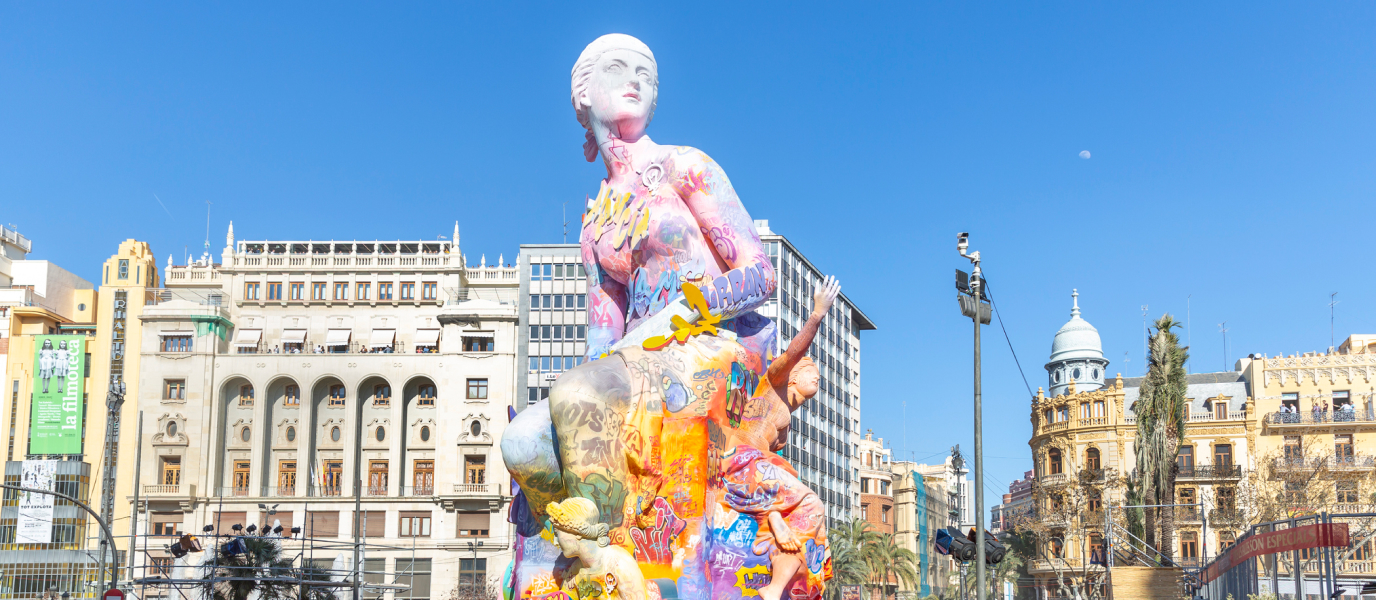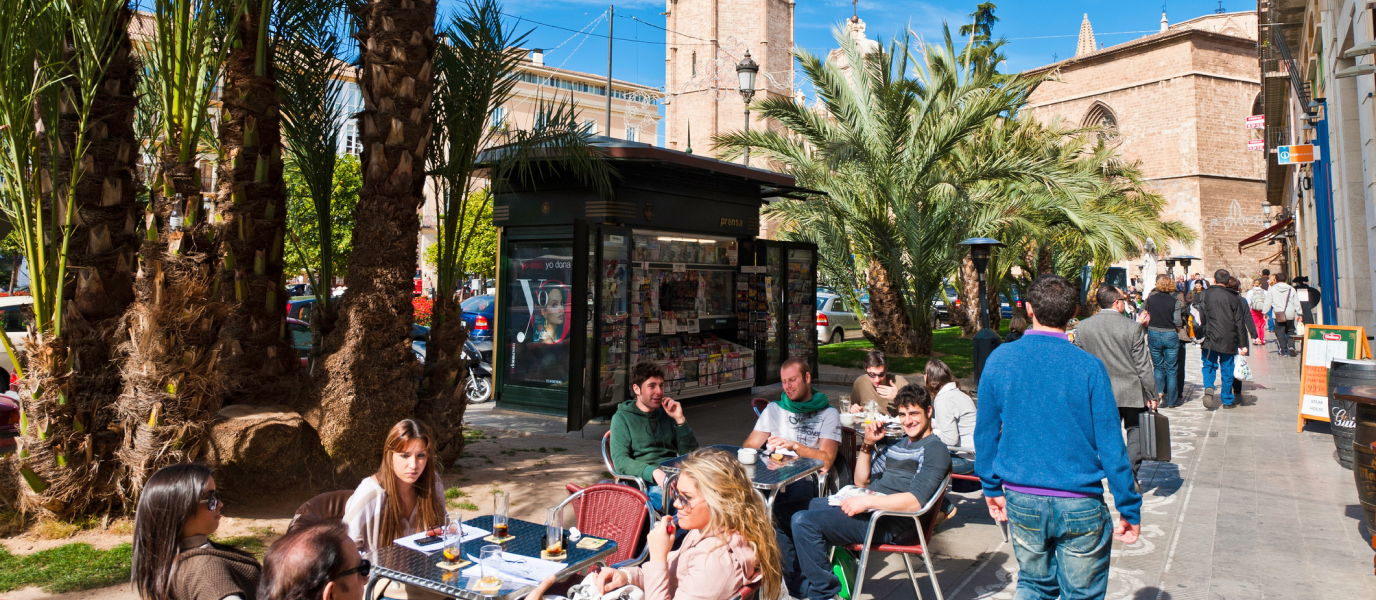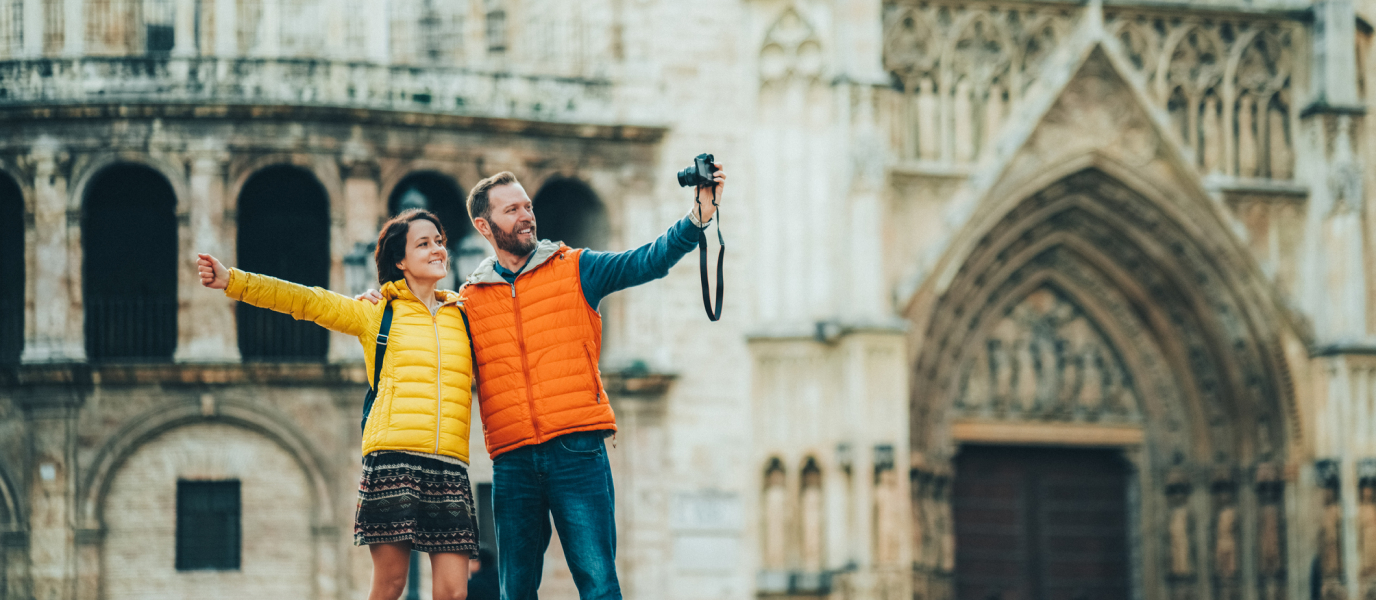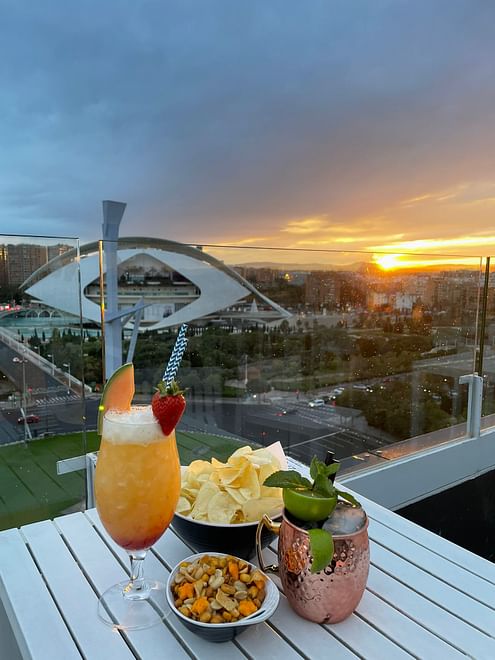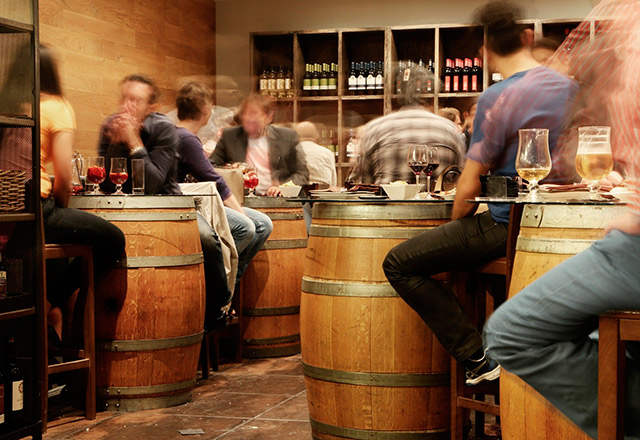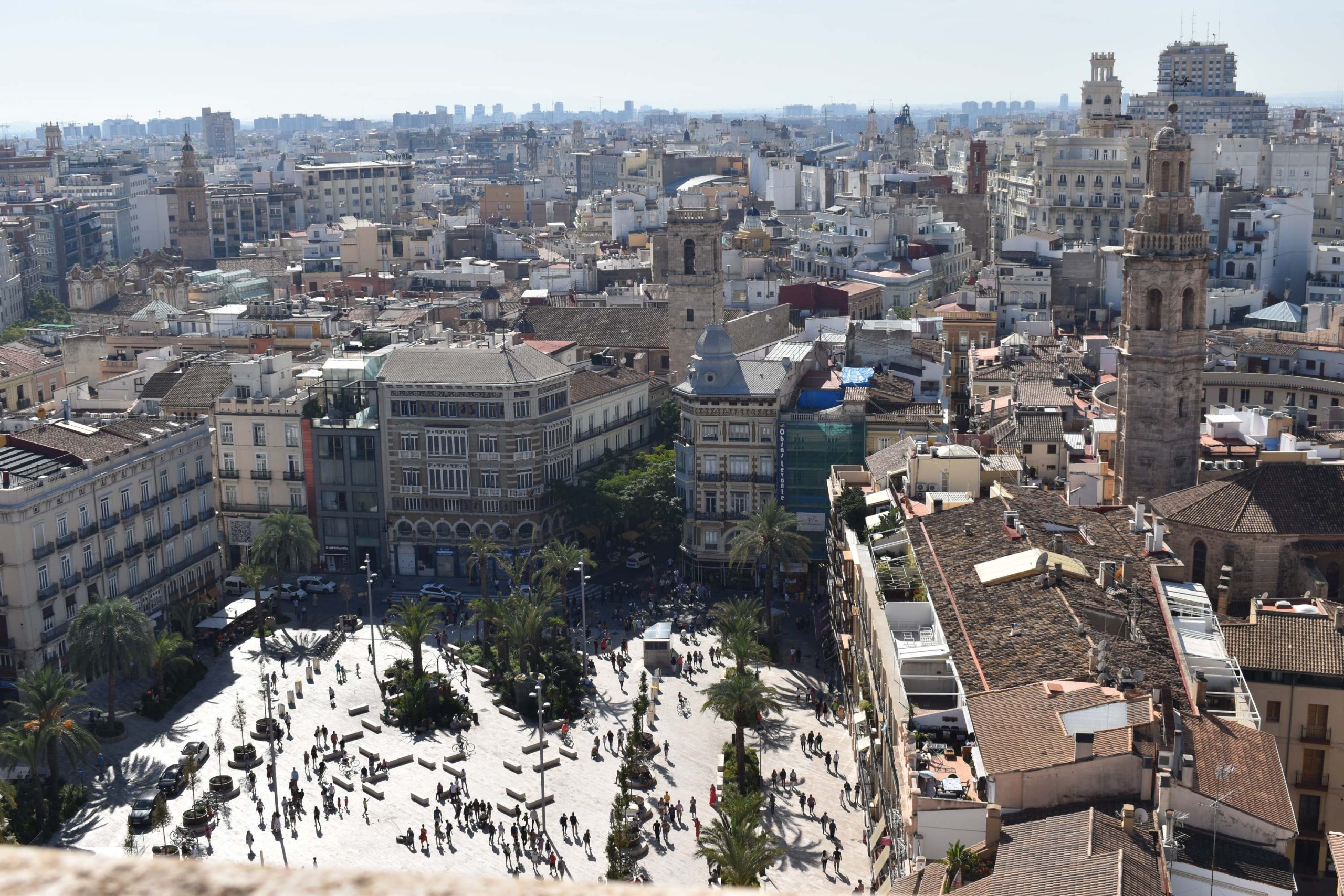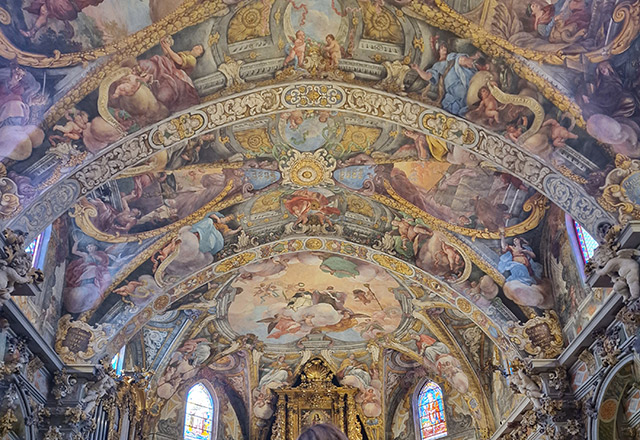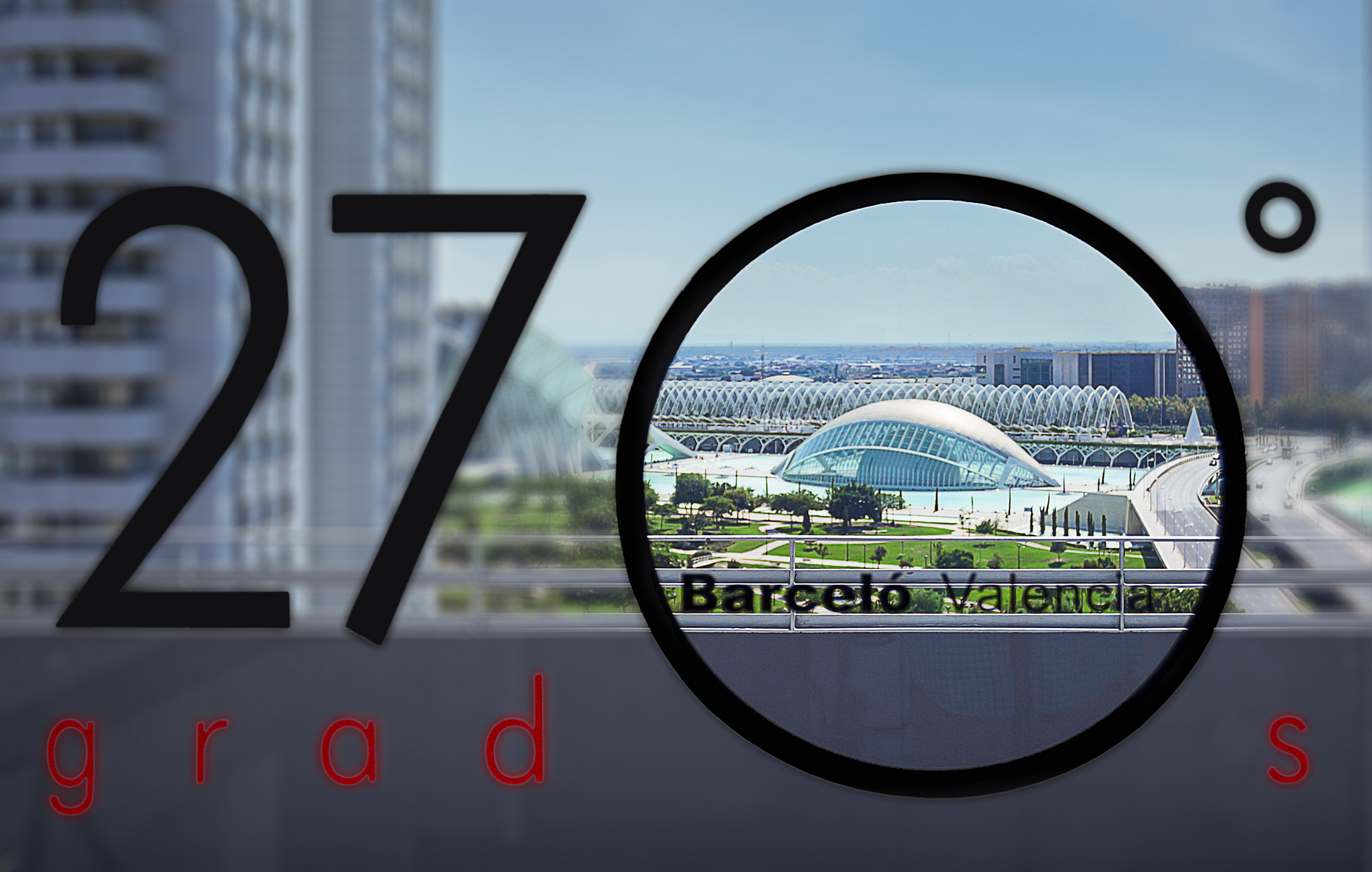The Plaça de l’Ajuntament—City Hall square—is the nerve centre of the Falles celebrations [Fallas in Spanish]. Valencia burns in the months of March in its festivities that have recently been declared Intangible Cultural Heritage of Humanity. This is one of Spain’s most international festivals, the celebrations of which reach their height on 19 March—Saint Joseph’s Day.
It is said that the character and interests of a people are reflected in their festivities. Light, gunpowder, fire and tableaux are the key elements of this Valencian festival. They are undoubtedly elements that display great ingenuity and energy, and they engage the participation of visitors by inviting them to roam the city discovering the ninots, those ephemeral works of art made of wood and papier mâché with their mocking, critical messages, which can be up to twenty metres high. More than 300 of them are erected throughout the city and each of them portrays a scene from social or political life that is charged with irony.
It all begins with the mascletà
Starting on 1 March and until the end of the Falles on 19 March, every day at 2:00 PM in the Plaça de l’Ajuntament (link interno) there is a mascletà, a mass of firecrackers going off continuously. It starts quite gently and gradually gets louder, reaching 120 decibels, which is why it is recommended that you watch the display with your mouth open. Each day, when the Queen of the Falles, from the City Hall balcony, says “Senyor pirótecnic pot començar la mascletà“, the thunder begins and goes on for ten deafening minutes. Your attention will be drawn to the beauty of the costumes of the falleras that are based on the traditional dress of Valencian women in the eighteenth and nineteenth centuries. Each costume costs at least €2000 and care is taken of every detail, from the shoes covered with the same fabric as the dress, to the gold- and silver-plated combs that the falleras wear in their hair. Particularly striking are the voluminous silk skirts with floral motifs that are covered by aprons embroidered with gold or silver thread.
The plantà and the firework displays
15 March brings the long-awaited plantà, when the assembly of the Falles monuments is completed, marking the start of four days of firework displays in the Jardí del Túria gardens, that provide a spectacle of light and colour lasting more than 15 minutes. The maestros falleros work against the clock during the night of 15 March to ensure that the falles are perfectly in place by first thing on the morning of the 16th. This is the day when the panel of judges announces the ‘Pardoned Ninot‘, the only one that will be saved from the flames. In fact the assembly of the biggest monuments begins a few days earlier and the night of the 15th is spent adding the final touches. The first step in assembling the falles is to lay a base of sand bags so that the fire does not damage the tarmac. Each one usually carries a placard explaining the meaning of the falla and the social issue it is criticising.
The parade of the Queens of the Falles
On the morning of 17 March, the Queens of the Falles in their spectacular costumes make their way to the Plaça de l’Ajuntament in a colourful procession through the streets. There they collect their prizes, which are divided into categories. There is an adult Queen of the Falles accompanied by twelve maids of honour and a child Queen of the Falles who also has twelve girls as her maids of honour.
The floral offering to Our Lady
The floral offering to Our Lady of the Forsaken, Valencia’s patron saint, takes place on 17 and 18 March and each year creates a unique spectacular mantle full of colour, with all of the Falles committees parading to the image of the Virgin wearing their regional costumes and accompanied by marching bands. The ceremony lasts from the early afternoon to late at night, during which time a great tapestry of flowers 15 metres high gradually takes shape to become what will be the mantle of the Virgin for those few days. It is a spectacle for the senses to see and smell the square covered with flowers in a perfect floral design that leaves nothing to chance, because the Central Falles Board decides on the colour of the bouquets for each of the Falles committees in order to achieve the desired effect in Our Lady’s mantle.
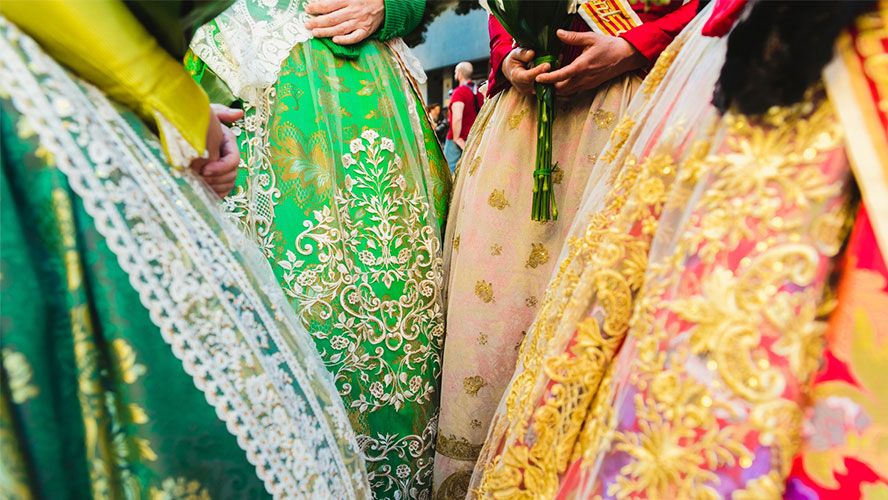
The Nit del Foc
The Nit del Foc—Night of Fire—takes its name from the huge firework display that begins at midnight on 18 March in the Passeig de l’Albereda. It is a magnificent spectacle full of colour and the most original fireworks you will ever have seen.
The Cremà
On the night of 19 March the monuments go up in flames in what is known as the Cremà. All of the falles must be burnt to ashes. The falleros encircle the falla with an incendiary wick which is lit by the Queen of the Falles. The night starts at 10:00 PM with the burning of the children’s monuments. The large falles are burned at midnight and the winner of the first prize is set alight at half past midnight. The Falles Festival officially ends at 1:00 AM when the city council’s falla is set alight.
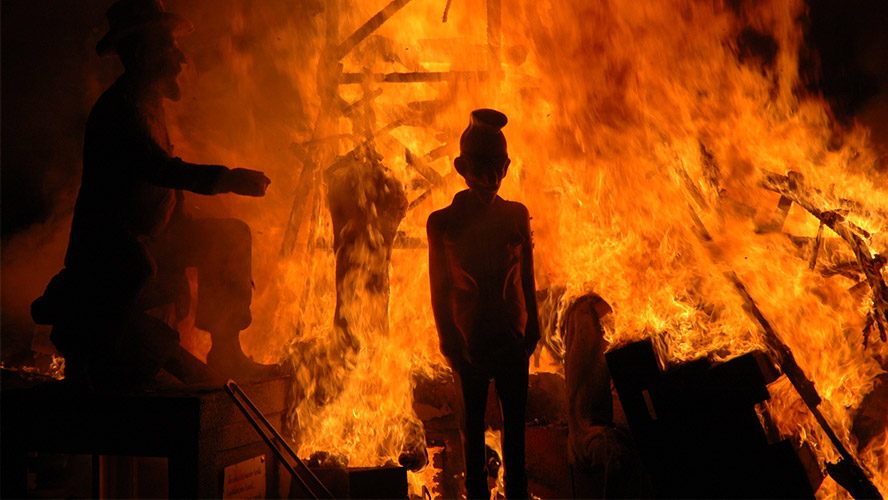
The origin of the Falles
The origin of the Falles dates back to the sixteenth century when on the eve of the day of Saint Joseph, their patron saint, carpenters would burn the pieces of wood that they used to raise up the oil lamps that gave them light during the winter. Over time they began to throw old junk on the fires, and the sense of humour of the people of Valencia eventually turned them into ninots.
Falles all year round
If you go to Valencia at another time of the year, you will be able to understand a little more about this festival by visiting two very special museums.
One is the Falles Museum, where you can see the ninots that were saved from the flames dating back to 1934 as well as the posters of the Falles from different years. You can take a free guided tour of the museum from Tuesday to Friday. The other museum is that of the Guild of Falles Artists, where you can see scale models of the official falles for recent years as well as that of the figure of Gulliver (link interno) in the Jardí del Túria gardens.




































































